United States Air Service
USAS HistorySummary 1917-1918 Lafayette Escadrille
N.124/Spa.124 1st Observation
1st, 12th, 50th, 88th 1st Pursuit Group
27th, 94th, 95th, 147th 1st Bombardment
96th, 11th, 20th 2nd Pursuit Group
13th, 22nd, 49th, 139th 3rd Pursuit Group
28th, 93rd, 103rd, 213th 4th Pursuit Group
17th, 148th, 25th, 141st 5th Pursuit Group
41st, 138th, 638th 3rd Air Park
255th. List of Aces
United States Naval Aviation
US Naval AviationUnited States Marine Corps Aviation
US Marine AviationAircraft
 Nieuport 28
Spad VII
Spad XIII
Fokker Dr.1
Albatros D.Va
Fokker D.VII
Nieuport 28
Spad VII
Spad XIII
Fokker Dr.1
Albatros D.Va
Fokker D.VII
Website: Atlanta SEO
E-mail us
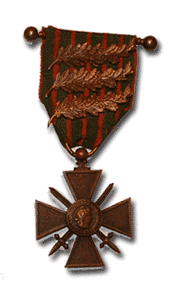
Related Links: Nieuport 17 | Nieuport 28 | Spad VII | Spad XIII | Spad XVI | Fokker D.VII and other German aircraft | Halberstadt CL.IV | Fokker Dr.1 | Albatros D.Va | Caudron G4 trainer | USN Curtiss N-9H trainer | USN Thomas Morse SC-4 | USN Hanriot HD-1 | USN Sopwith Camel | What was the first American fighter plane?
Fokker D.VII, Pfalz, Junkers D.I and Halberstadt CL.IV
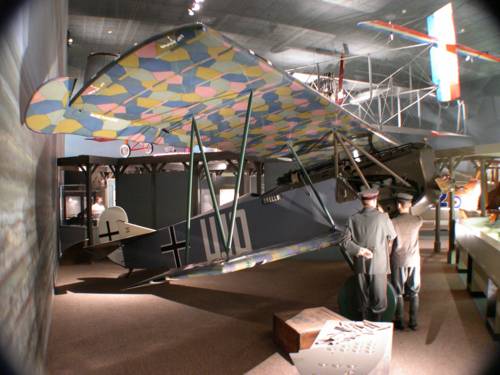
Fokker D.VII
By the last few months of the war, the Germans were being outfitted with Fokker D.VII fighters. The highly maneuverable and legendary Fokker Dr.1 triplane had become outclassed by competing Allied aircraft soon after entering service. Furthermore, it was built in small numbers (320) and was hobbled by a 110 horsepower rotary engine limiting it to low speeds and lower altitudes. Thus, Germany's IdFlieg (Inspectorate of Flying Troops) held a competition for a new aircraft based around the 160 horsepower Mercedes DIII engine.
Thirty one different prototypes were submitted including the D.VII and eight others by Fokker. The Fokker lineage was evident in the design of the squared off cross section of the fuselage and the circular tail – both similar to the Dr.1. The VII was structurally strong, handled well, was nimble and maneuverable. The competition was at the end of 1917. The D.VII entered service with Jagdstaffeln 1 in April, 1918, replacing Dr.1s in its wake.
The 160 horsepower left it inferior to the latest French and British types, but switching to a 185 horsepower BMW IIIa engine made it faster climbing, slightly faster flat out and able to climb to a higher maximum ceiling. Now it could make 20,000 feet in under 20 minutes, though its 120 mile per hour top speed still left it unable to overtake the Spad XIII in level flight.
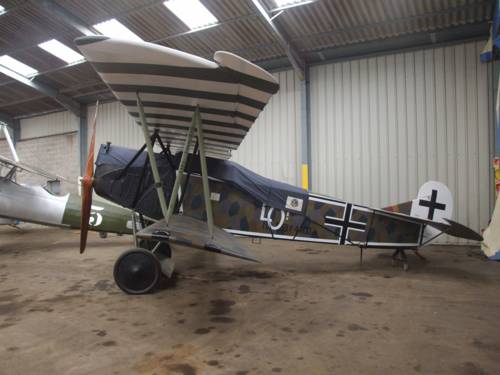
Fokker D.VII
However, in a dogfight, the D.VII had a great advantage. It could sustain tight turns without losing altitude. Maintaining altitude was important since the plane that was able to remain higher up usually kept the initiative since it could then either dive onto its prey or even dive away out of harm's way.
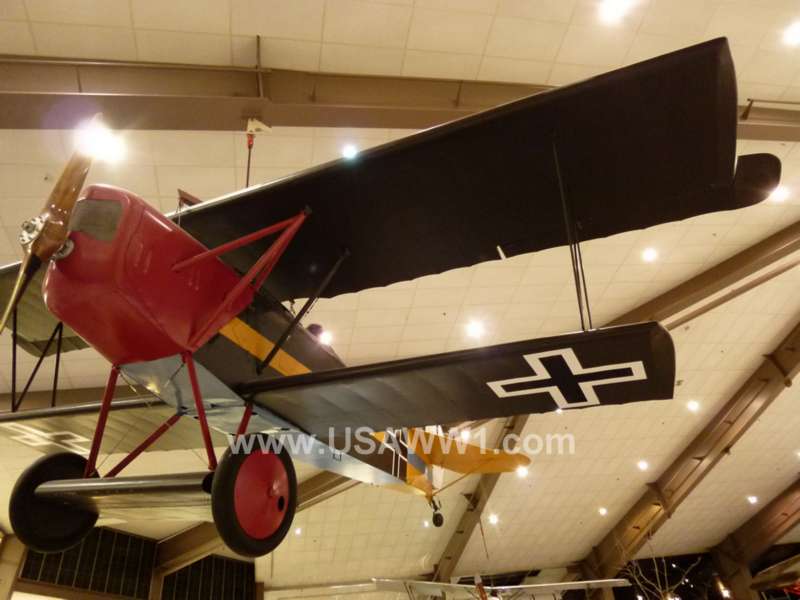
Fokker-DVII-01
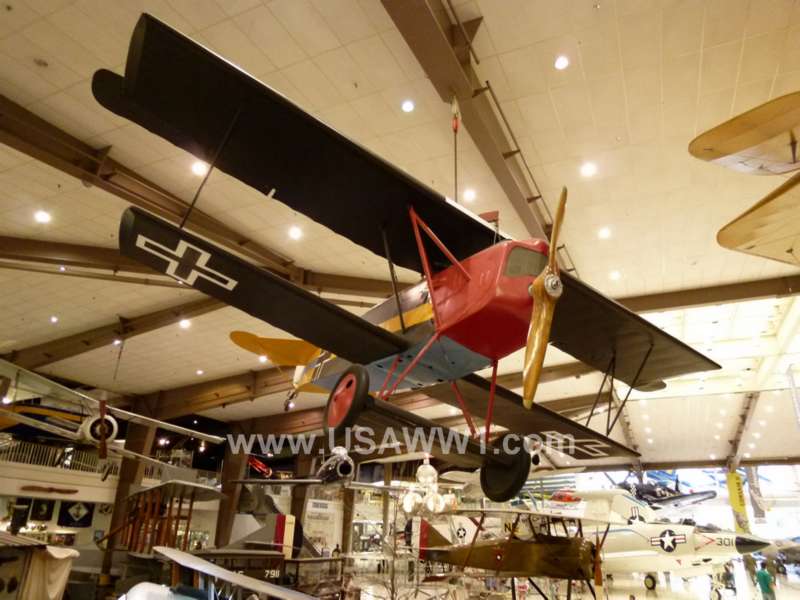
Fokker-DVII-02
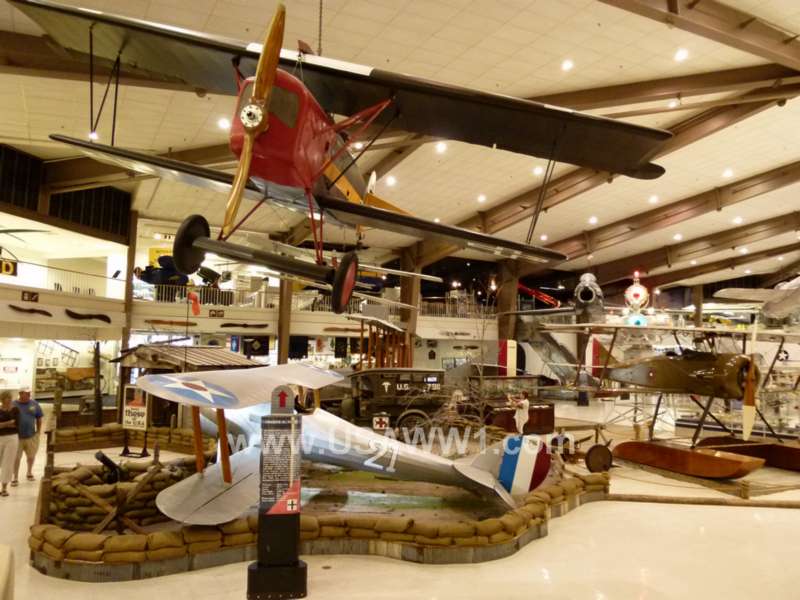
Fokker-DVII-03
Of the D.VII, RFC pilot Donald Hardman said:
"This machine prevalent on the front at the end of the war had all the good points of its predecessors and several more, in fact it was as near perfect as any machine during the war.
It could climb up to 20,000 feet at a terrific speed, had a very good speed on the level, could dive almost at any rate, having an extremely high factor of safety. It turned at a lightning speed and would perform any other stunt better than any other machine."
Thus of these advanced German types, the VII was produced in the greatest numbers and was perhaps the most reliable, not being plagued by problems that felled previous Fokkers. And so it was probably the all-around best German aircraft of the war. It would also be the nemesis of many of the American fighter squadrons.
The plane was considered dangerous enough to be the only aircraft specifically mentioned as part of the Conditions of an Armistice with Germany in which the Germans were to "surrender in good condition… all D7s". If the D.VII was not the best German plane of the war, then it was pretty close.
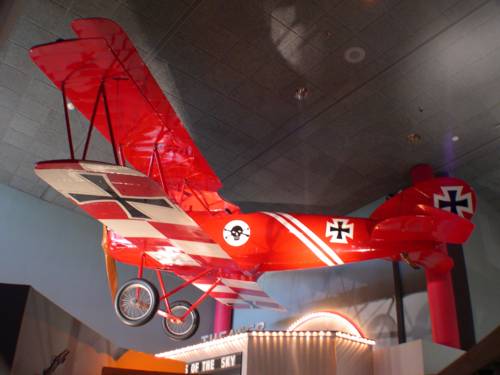
Pfalz
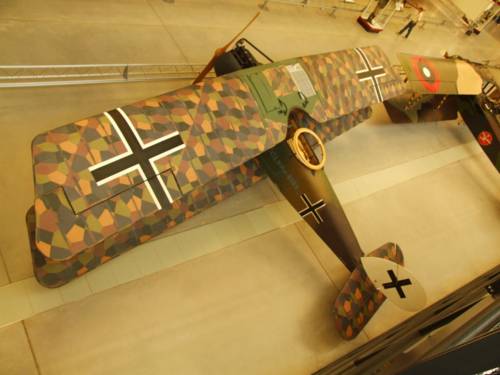
Halberstadt CL.IV
The D.VII was not the last word in German aircraft design. The Dornier D.I could climb to 26,500 feet and zip along at 125 miles per hour versus 19,600 feet and 117 miles per hour for the D.VII. But the D.I never went into production because it had too many innovative ideas not yet fully sorted out which rendered it unsafe. Perhaps most interesting late-war German design was single seat Junkers D.I .
The Junkers D.I was slower than the others and was only capable of 105 miles per hour, but it had a tough corrugated metal skin similar to the far larger Junkers Ju-52 which would gain fame during World War II. This skin made gave the plane great structural rigidity and also the ability to sustain a great amount of damage. Yet only 41 of these advanced Junkers fighters were built – the last of which is now suspended dramatically from the ceiling at Le Bourget's Museum of Aviation.
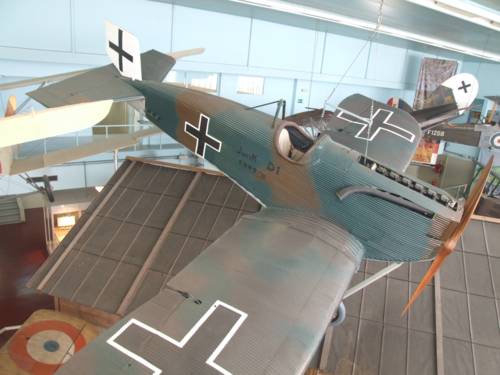
Junkers D.I
Related Links: Nieuport 17 | Nieuport 28 | Spad VII | Spad XIII | Spad XVI | Fokker D.VII and other German aircraft | Halberstadt CL.IV | Fokker Dr.1 | Albatros D.Va | Caudron G4 trainer | USN Curtiss N-9H trainer
| USN Thomas Morse SC-4 | USN Hanriot HD-1
| USN Sopwith Camel | What was the first American fighter plane?
Events/Airshows
 Events/Airshows
Events/Airshows
Pilots/Aviators
 Raoul Lufbery
Raoul LufberyAce of Aces Eddie Rickenbacker
26 victories Quentin Roosevelt
Son of President KIA Frank Luke
18 victories in 17 days Eugene Bullard
1st African Am. Pilot David Ingalls
1st US Navy Ace List of USAS Pilots
Find a Relative American WWI Pilots
Mini bios
USAS Research
 USAS Videos
Reading List
USAS Videos
Reading ListWWI US Aviation Related Links
WWI US Aviation Credits War Wings
by Phillip W. Stewart WWI Maps
Units & Airfields Payne Field
USAS Aerodromes now... USAS Archives
Questions? Need Help? American Expeditionary Forces
WWI Doughboys in France